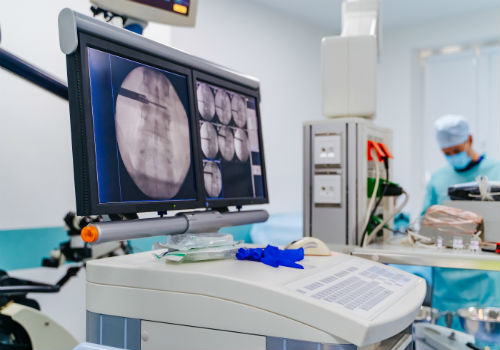When medical laptop carts on wheels became prevalent in hospitals throughout the country in the late 1990s, they were a burden. The batteries didn’t last long, they were heavy and cumbersome to maneuver, and the systems weren’t very user-friendly. Luckily, technology has changed significantly since the 1990s, and so have mobile medical carts.

With Hot Swap battery systems, you can quickly swap out a dying battery for a fresh one in less than 30 seconds. The batteries are light and easy to move, with attached handles for additional convenience. Gone are the days when you had to track down a free electrical outlet to plug in your medical cart: now, you can stay on the move throughout your shift.
1.) Easy to swap out
Swap option batteries, or Hot Swap batteries, are straightforward to swap out when one battery runs low. Many carts are now equipped with a display which notifies you when your battery power is about to run out.
Hot Swap batteries can be quickly switched out. Users can remove a drained battery, grab a charged battery, and then simply slide it into the charging port. The whole process takes less than 30 seconds, and most carts will not lose power or work during this short timeframe.
Many Hot Swap battery systems last anywhere between 6-12 hours, so they won’t have to be switched out often during a shift. This is a major improvement on older battery technology on medical carts, which would only last for a few short hours at a time.
2.) Lighter carts
While some batteries are formulated with lithium ion technology, many medical-grade Hot Swap battery systems are crafted with lithium iron phosphate chemistry (LiFePO4). This means that the battery weighs in between six and eight pounds, which is very light for a computer cart and for most users to handle. They won’t add unnecessary bulk to your cart, so the medical laptop cart on wheels can maneuver anywhere within a facility with simplicity and ease.

3.) Quick charge
The LiFePO4 chemistry provides a quicker charge more safely. LiFePO4 battery chargers are made to bring the charge in the battery to 85% quickly before slowing down. This slow-down process from 86-100% keeps the electrolytes inside the cells of the battery from becoming combustible.
Many charging systems will bring all batteries to the 85% mark first before bringing them to 100%, meaning that a battery or cart is available much sooner, and lasts longer.
4.) Off-cart or on-cart charging
Depending on your facility, workflow, and space, you have the option of choosing off-cart charging, or on-cart charging. If you are not a 24-hour facility and have many available outlets, on-cart charging may be the best choice for you and your staff.
In a 24-hour facility with a large staff, it may be more prudent to have a centralized area on each floor with several Hot Swap battery charging ports. This way, nurses and doctors who need to switch out a battery can quickly access charged batteries and swap them out on their medical carts on wheels. The ability to customize what system will work best for your office or facility makes Hot Swap batteries an attractive option.
5.) Safety first
While lithium ion batteries are cheaper to produce and lighter in weight, there have been issues with these batteries that are concerning. Many notable incidents of lithium ion batteries exploding or catching fire have made their way to national news stations, prompting recalls from tech companies all over the globe.
According to the Michigan Nurses Association, most lithium ion batteries need to be stored with a partial charge, and rapid charging can heat the electrolytes and cause an explosion. With lithium iron phosphate batteries, they can be stored with no charge and can rapid-charge safely up to 85%. With around 70 individual cells in a Hot Swap battery, safety must be a priority for mobile medical carts.


